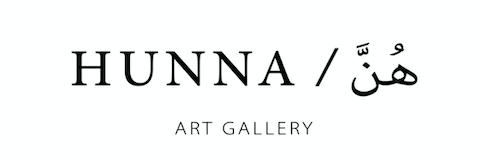Amani Al Thuwaini, by Sarah Daher
To have a conversation with Amani AlThuwaini is to uncover the wealth of depth hiding behind her expansive and growing artistic practice. Domesticity, womanhood, luxury, consumption, traditions, and symbols persist as recurring ideas in Amani’s practice. Growing up half Kuwaiti and half Ukrainian, the feeling of otherness was never far from her lived experience. While intuitively a cultural rift as wide as this Khaleeji-European one can be read as an isolating and challenging way to grow up in the world, Amani is very clear that her work about feeling like an outsider does not inflect a tone of oppression. Similarly, she rejects the tendency to categorize work about the feminine experience as feminist - rather Amani’s practice is a filter through which she parses out the complexity of feelings and memories that she has, womanly or otherwise, in order to arrive at a pared back view of what a human might look like beneath the many layers of consumerist extravagance we bury ourselves under.
Cultural difference can be felt along many lines. Preoccupied by the mechanics of consumption, Amani’s work looks at the idea of luxury: how it is constructed, how it shifts from culture to culture, and how individuals are perceived in society based on what they accumulate, consume, or display. On a primary level, Amani looks at material objects that we accumulate and brush against on a daily basis; reflecting on her childhood through the household items or Ukrainian folk attire that she lived amongst. For Amani consumption is many-layered also including the immaterial in the form of media and the ephemeral in the form of consumables like food. Questions of access and absence become salient when looking at something like the sofra (the meal set up around a table), how does a fruit basket filled to the brim with out-of-season fruit become legible as a symbol of excess, how does the absence of food staples from a different homeland become a changed form of consumption.
Amani’s consumption was often oppositional in nature. Growing up amongst Soviet cartoons, fairytales, and storybooks, but also musalsalat Kuwaitiya (Kuwaiti soap operas). The taboos in those series, often romantic in narrative, were a direct foil to soviet fairytales where love is the end goal and outward displays of romance and affection were normal. The consumption of love stories or narratives around marriage fed directly into much of Amani’s works around the phenomenon of the dowry, a traditional and significant ritual between bride and groom in Islamic culture. Reflections on this are aplenty in Amani’s practice such as in her works Material Love, Manifestation of the Dowry, Gifts on Wheeels, and Dazza. Amani’s interrogation of dowry practices is decidedly contemporary, observing how a practice of old tradition manifests and circulates in our present moment of consumption often in the form of luxury goods made doubly visible through social media.
Amani’s practice does not shy away from darkness. While looking at childhood, material consumption, luxury, and love, generally sources of reprieve, mirth, and light, she maintains a realistic view on how these elements operate in the world. The realities of geopolitical conflict, exodus, cultural expectations, the less presentable sides of domesticity, the truth of a life beneath the veneer of what is outwardly presented – it is in its honesty that Amani’s practice truly comes to life in its full form. By bringing fragments of real and imaginary objects into conversation with one another, Amani documents specific moments in history through the material culture of the moment. Through a practice of layering and unlayering she begins to make sense of what it means to belong to a specific culture, society, or group.
Anyone can find something in Amani’s work that reaches them, regardless of how much their lived experience overlaps with hers. In spite of having memories vastly different from one another, each individual has a multi-faceted history with consumption, beginning at infancy and carrying on throughout adult life. It is through this agglomeration of consumption of pop culture, material goods, stories, and inherited objects and traditions that the complexity of a human is built. And conversely, what Amani pushes us to examine, it is through the unraveling of all these layers that we find our origins, our selves at their most mundane.
